Pronunciation:
(PUP-is)Abbreviation:
PupGenitive:
PuppisRight Ascension:
8 hoursDeclination:
-40 degreesArea in Square Degrees:
673Crosses Meridian:
9 PM, February 25Visible Between Latitudes:
40 and -90 degreesThe constellation Puppis, the stern, is located in the southern hemisphere of the sky. It can be seen from January through May and is visible at latitudes between 40 degrees and -90 degrees. It is a medium-sized constellation with a total area of 673 degrees. It ranks 20th in size among the 88 constellations in the night sky. It is bordered by the constellations Carina, Canis Major, Columba, Hydra, Monoceros, Pictor, Pyxis and Vela.
Puppis was once part of a larger constellation called Argo Navis. This large constellation represented the ship that Jason and the Argonauts sailed on their voyage to find the legendary golden fleece. Argo Navis was one of the 48 constellations first listed by the Greek astronomer Ptolemy in the second century. This constellation was later divided by the French astronomer Nicolas Louis de Lacaille into three smaller parts. Puppis became the Stern, Carina the Keel, and Vela the Sails. These three smaller constellations were added to the official list of modern constellations in the early 20th century by the International Astronomical Union (IAU).
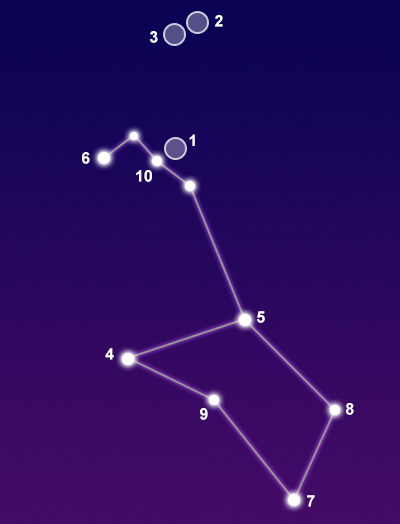
points of interest below © Sea and Sky
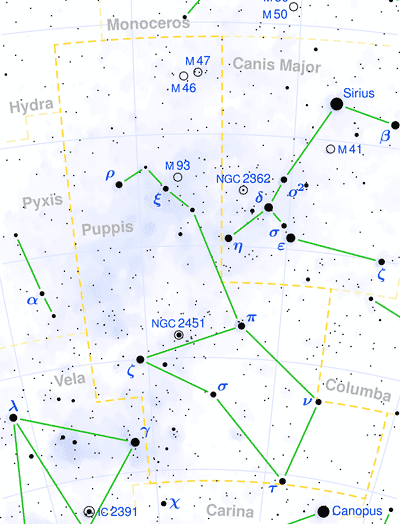
© Torsten Bronger CC BY-SA 3.0
M47
M46
Naos
Tureis
Turais
Tau Puppis
Nu Puppis
Hadir
Azmidiske
N/A
N/A
"Ship"
(Origin Unknown)
(Origin Unknown)
N/A
N/A
(Origin Unknown)
"Little Shield"
Open Star Cluster
Open Star Cluster
Blue Supergiant Star
Double Star System
Yellow-White Giant Star
Binary Star System
Blue-White Giant Star
Orange Giant Star
Yellow Supergiant Star
5.20
6.00
2.25
2.73
2.78
2.95
3.17
3.25
3.35
Puppis contains several stars brighter than magnitude 3. The brightest star is Naos with a visual magnitude of 2.25. It is a blue supergiant star located approximately 1,090 light years from Earth. The second brightest star is Tureis with a magnitude of 2.72. It is a double star system that lies 810 light years from our solar system. Turais is the third brightest star with a magnitude of 2.78. It is a yellow-white giant star located about 64 light years away.
Puppis contains three Messier objects, all of which are open star clusters. M46 is an open cluster of about 150 stars. It is believed to be about 300 million years old and is located nearly 5,500 light years from our solar system. M47 is a cluster of about 50 stars located approximately 1,600 light years from Earth. It is believed to be more than 78 million years old. M93 is another open cluster containing about 80 stars. It is believed to be approximately 100 million years old and is located 3,600 light years away. The constellation also contains a few other deep-sky objects that can only be seen in large telescopes. The Skull and Crossbones nebula (NGC 2467) is a small cluster of stars within a nebula. It is a region of active star formation. NGC 2440 is a planetary nebula with twin lobes of bright orange gas. NGC 2298 is a globular star cluster containing thousands of individual stars. NGC 2451 is an open cluster of about 40 stars.
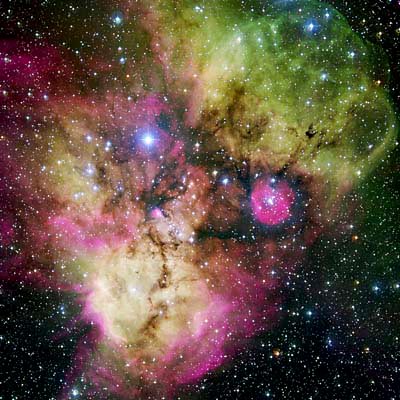
© European Southern Observatory / CC BY 4.0
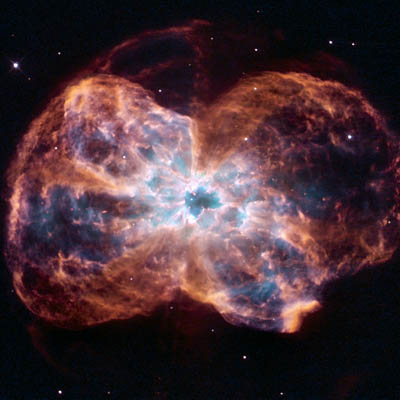
the Hubble Space Telescope
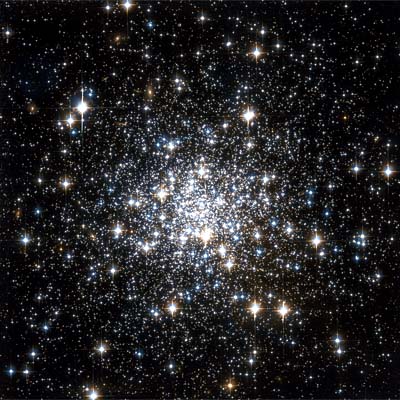
the Hubble Space Telescope
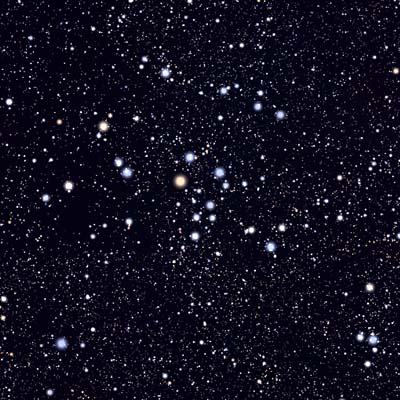
© Roberto Mura / CC BY 3.0



